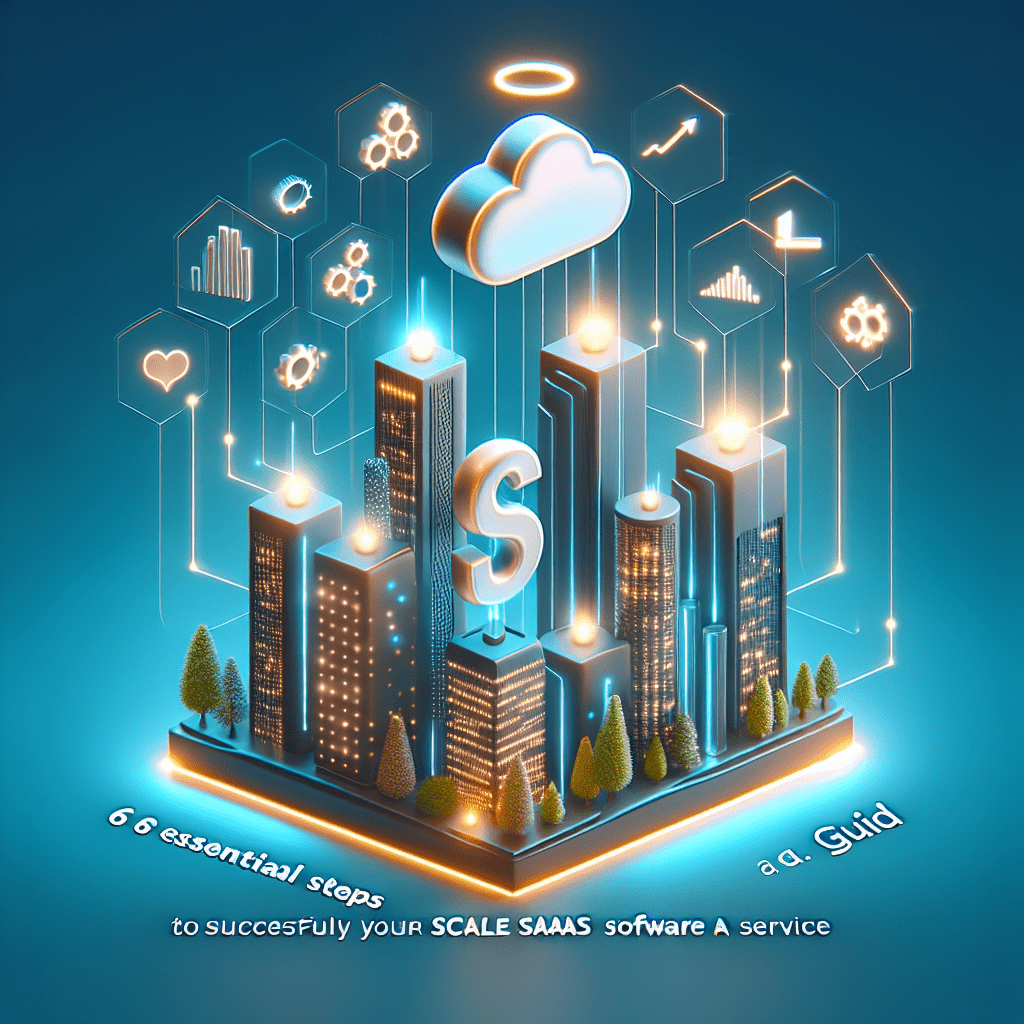6 Essential Steps to Successfully Scale Your SaaS Software Service: A Guide
Scaling a SaaS (Software as a Service) software service can be a daunting task for any business. As your customer base grows and demands increase, it is important to have a scalable infrastructure in place to handle the workload efficiently. In this blog post, we will discuss essential steps to successfully scale a SaaS software service, and provide examples of exactly what to do.
1. Plan for Growth
The first step in scaling your SaaS software service is to plan for growth. This means anticipating the future needs of your customers and designing your infrastructure to handle it. Make sure to analyze your current system and identify any potential bottlenecks that may hinder scalability. Consider factors such as server capacity, network bandwidth, and database performance. By planning ahead, you can avoid unexpected issues when your customer base expands.
2. Utilize Cloud Computing
Cloud computing is a cost-effective and efficient way to scale your SaaS software service. By leveraging cloud services, you can easily add more servers or storage space as needed, without the hassle of purchasing and maintaining physical hardware. Popular options include Amazon Web Services, Microsoft Azure, and Google Cloud Platform. These services also offer auto-scaling features, which can automatically adjust resources based on demand, saving you time and money.
3. Implement a Microservices Architecture
A microservices architecture is a software development approach that breaks down a large application into smaller, independent services. This allows for easier management and scalability of individual components. For example, if your SaaS software service has separate modules for user authentication, data storage, and payment processing, each of these can be managed and scaled separately. This approach also enables faster development and deployment of new features, giving you a competitive edge.
4. Monitor and Optimize Performance
As your SaaS software service grows, it is crucial to monitor its performance and make necessary optimizations. This can include optimizing database queries, tuning server configurations, and implementing caching mechanisms. Regular performance testing can help identify any potential bottlenecks and allow you to make necessary adjustments before they become a major issue. Popular tools for performance monitoring and optimization include New Relic, Datadog, and AppDynamics.
5. Automate Processes
Automation is key to scaling a SaaS software service. By automating routine tasks such as backups, server provisioning, and deployment, you can save time and reduce the risk of human error. This also allows your team to focus on more important tasks, such as developing new features and improving customer experience. Tools like Chef, Puppet, and Ansible can help with automation of server configurations and deployments.
6. Prioritize Security
As your SaaS software service grows, so does the risk of cyber attacks. It is crucial to prioritize security and implement measures to protect your customers’ data. This can include regular security audits, implementing SSL encryption, and following best practices for secure coding. Additionally, consider implementing multi-factor authentication for user access to sensitive data. Security breaches can not only damage your reputation but also result in significant financial losses.
In conclusion, scaling a SaaS software service requires careful planning and implementation of a scalable infrastructure. Utilizing cloud services, implementing a microservices architecture, monitoring performance, automating processes, and prioritizing security are essential steps to successfully scale a SaaS software service. By following these steps and continuously evaluating and optimizing your system, you can ensure a smooth and efficient growth of your business.


